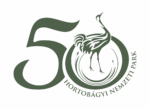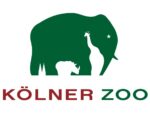Pentezug Project
Long term grazing in Hungary's first National Park and World Heritage Site
Pentezug Reserve, which was established in 1997 by Hortobágy National Park Directorate (HNPI) and Cologne Zoo, aims to preserve open grasslands using semi-wild grazers with minimal human interference. To reach this goal, bovines and Przewalski’s horses were introduced to create a relatively diverse grazing community. The area is a typical grassland and has a semiarid-continental four-season climate. Within the reserve the large grazers are kept in semi-wild conditions, there is no interference with their movement within the reserve or their social bonds, surplus food or water is usually not offered. Notably, the fence inhibits the migration of large herbivores, but does not isolate the area in other aspects, wild animals (e.g. rabbits, foxes, and roe deer) can easily cross the fences. Since the establishment of the reserve, both the Przewalski’s horse population and the cattle population successfully adapted to the new environment and grew rapidly. Because of the lack of apex predator the population number needs to be managed. Cattle are considered domestic animals, though the aim is to breed animals that resembles to the ancient aurochs both appearance and behaviour (strong vitality, easy calving, etc.).
To understand the effect of large grazers on the grassland a wide monitoring work was started recently. The vegetation, weather, parasites of animals, condition of animals, water quality, orthopteran assemblages and small mammals are monitored regularly.
Since the Pentezug Reserve is closed from the public, a small Wild Animal Park at Malomhaza not far from the reserve was founded. This was done to show Przewalski’s horses and bovines to larger audience/tourists. Tourists can see these animals in a 130 ha fenced area with guided tours on a safari car.
Our other big aim is to develop a Przewalski’s horse automatic recognition software with the help of different field of experts (roboticists, computer scientists, biologists, etc). We continuously searching for research partners and possible funding. This would greatly help our work (would be less time consuming), our fine scale management and very probably it would help reintroduction sites in Mongolia or even feral horses on different continents.
The successful introduction of mixed grazing species (cattle and horses) on steppe ecosystem. In this way an effective maintenance of mosaic salt steppe vegetation.
Return of endangered wild bird species such as stonecurlew (Burhinus oedicnemus), imperial eagle (Aquila helica), european white tailed eagle (Haliaeetus albicilla), etc.

Pentezug Reserve, which was established in 1997 by Hortobágy National Park Directorate (HNPI) and Cologne Zoo, aims to preserve open grasslands using semi-wild grazers with minimal human interference. To reach this goal, bovines and Przewalski’s horses were introduced to create a relatively diverse grazing community. The area is a typical grassland and has a semiarid-continental four-season climate. Within the reserve the large grazers are kept in semi-wild conditions, there is no interference with their movement within the reserve or their social bonds, surplus food or water is usually not offered. Notably, the fence inhibits the migration of large herbivores, but does not isolate the area in other aspects, wild animals (e.g. rabbits, foxes, and roe deer) can easily cross the fences. Since the establishment of the reserve, both the Przewalski’s horse population and the cattle population successfully adapted to the new environment and grew rapidly. Because of the lack of apex predator the population number needs to be managed. Cattle are considered domestic animals, though the aim is to breed animals that resembles to the ancient aurochs both appearance and behaviour (strong vitality, easy calving, etc.).
To understand the effect of large grazers on the grassland a wide monitoring work was started recently. The vegetation, weather, parasites of animals, condition of animals, water quality, orthopteran assemblages and small mammals are monitored regularly.
Since the Pentezug Reserve is closed from the public, a small Wild Animal Park at Malomhaza not far from the reserve was founded. This was done to show Przewalski’s horses and bovines to larger audience/tourists. Tourists can see these animals in a 130 ha fenced area with guided tours on a safari car.

Our other big aim is to develop a Przewalski’s horse automatic recognition software with the help of different field of experts (roboticists, computer scientists, biologists, etc). We continuously searching for research partners and possible funding. This would greatly help our work (would be less time consuming), our fine scale management and very probably it would help reintroduction sites in Mongolia or even feral horses on different continents.
The successful introduction of mixed grazing species (cattle and horses) on steppe ecosystem. In this way an effective maintenance of mosaic salt steppe vegetation.
Return of endangered wild bird species such as stonecurlew (Burhinus oedicnemus), imperial eagle (Aquila helica), european white tailed eagle (Haliaeetus albicilla), etc.


